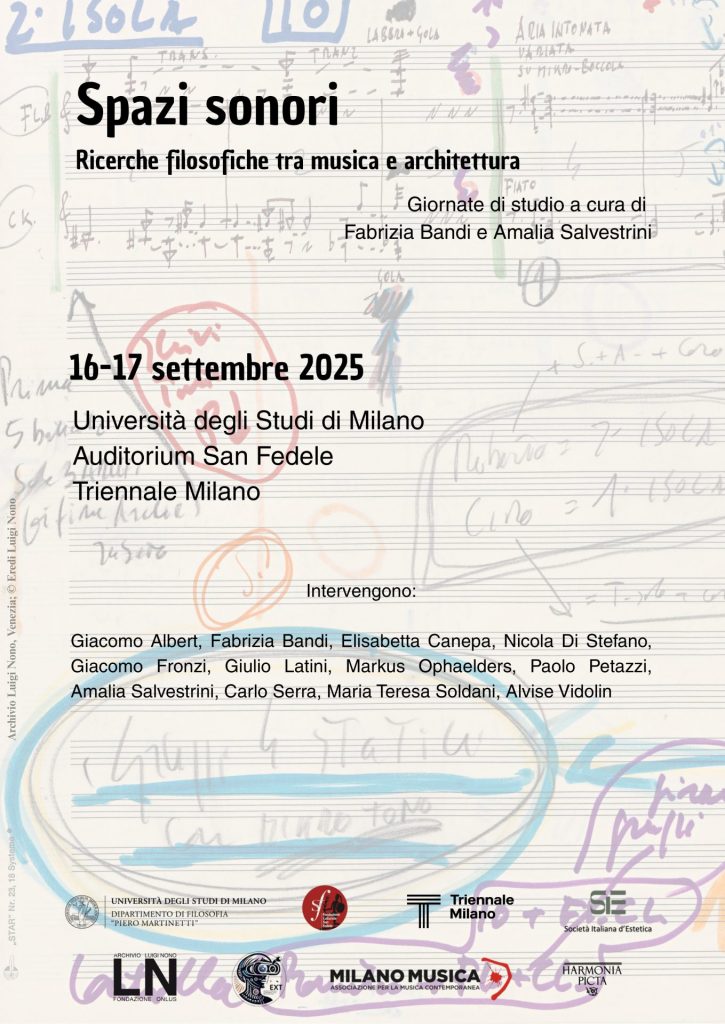
16-17 September 2025
University of Milan, Auditorium San Fedele, Triennale Milano
Study days curated by Fabrizia Bandi and Amalia Salvestrini
The intersection between space and sound has always represented both an experiential field and an object of study and practice, notably in architecture and music. Since the avant-garde movements of the 20th century and increasingly with the advent of new technological tools, the relationship between space and sound has become an extraordinarily fertile area of research, capable of fostering interdisciplinary dialogue among various art forms. This is evidenced by new languages emerging in musical and architectural fields, as well as theoretical and philosophical investigations into concepts such as atmospheres, environments, and soundscapes.
As Giovanni Piana writes, musical spatiality can primarily be understood in a literal, physical sense—when sound is placed, expands, and moves within a sonic body and an environment. Secondly, musical spatiality takes on a metaphorical meaning when parameters such as pitch, intensity, and timbre are perceived spatially through imaginative processes or synesthetic sensory interactions. Particularly significant in this respect is the work of Luigi Nono, who made space a central aspect of his compositional reflection. From his early works to his compositions for architect friend Carlo Scarpa and Das Atmende Klarsein in the 1980s, Nono appears to engage with both dimensions of sonic space described by Piana. This culminates in Prometeo. Tragedia d’ascolto, in which live electronics further enhance the spatial potential of sonic phenomena. The collaboration with Massimo Cacciari and Renzo Piano on this project underscores the fruitful potential of reflections open to interdisciplinary interaction.
In recent years, theoretical and practical articulations have been enriched by contributions from media studies, highlighting how sound recording, reproduction, and spatialization technologies redefine spatial perception. The analysis of different devices has revealed that sonic technologies are not merely mediators but actively contribute to generating acoustic environments, profoundly shaping our spatial experience. Interactive sound installations and situated acoustic experiences demonstrate how media have become key players in creating new forms of sensory and symbolic spatiality, facilitating an increasingly close dialogue among aesthetics, technology, and perception.
Sonic spatiality thus emerges as an essential perspective for examining and unraveling the intricate layers of meaning involved in the constitution of both sonic wholes and architectural volumes.
These two study days, supported by the Department of Philosophy “Piero Martinetti” of the University of Milan and the Italian Society of Aesthetics, intellectually sponsored by the Luigi Nono Foundation, and in collaboration with Fondazione Culturale San Fedele and Triennale Milano, aim to explore the philosophical, musical, compositional, and architectural potential of sound in its spatial dimension. They seek to stimulate contemporary debate and explore the horizons of meaning and possibilities inherent in the enduring connection between space and music, also through dialogues between young researchers and established scholars from various Italian universities.
